Traditional Homemade Eggnog
This Traditional Homemade Eggnog is made just how you want it, creamy and rich with all the holiday flavors of vanilla, nutmeg and cinnamon. A cozy mug of comfort for the whole family or spike them for the adults.
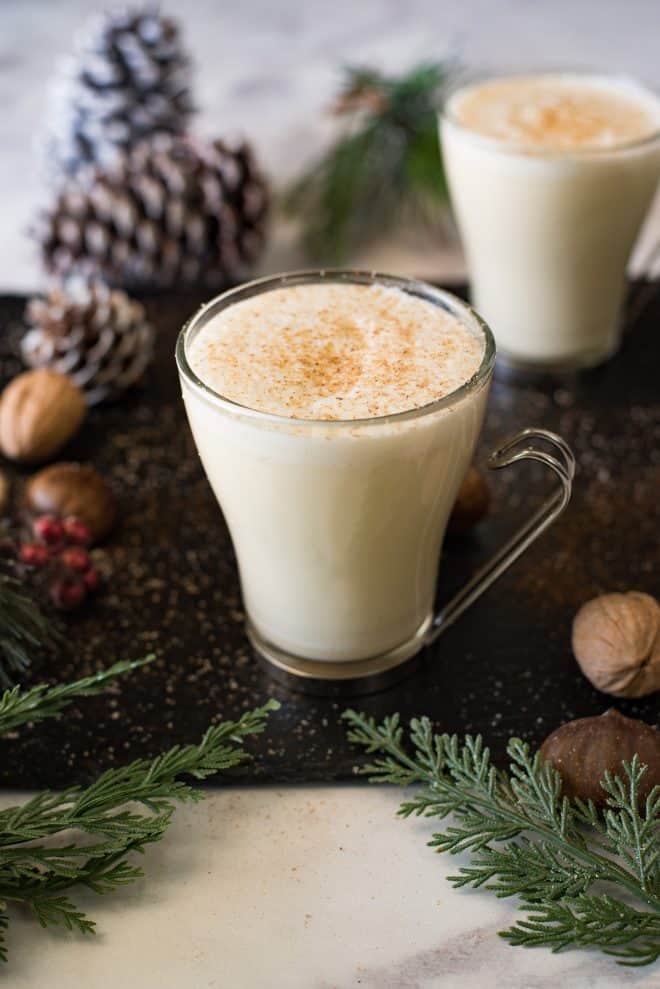
Eggnog is one of the best and things about the Christmas season. It doesn’t always have to be spiked (although I do enjoy it that way too), it is more than enjoyable the way it comes because it just tastes like Christmas.
This recipe is non-alcoholic so you can make a big batch for the whole family. This recipes yields enough for 4 people at 8 ounces each.
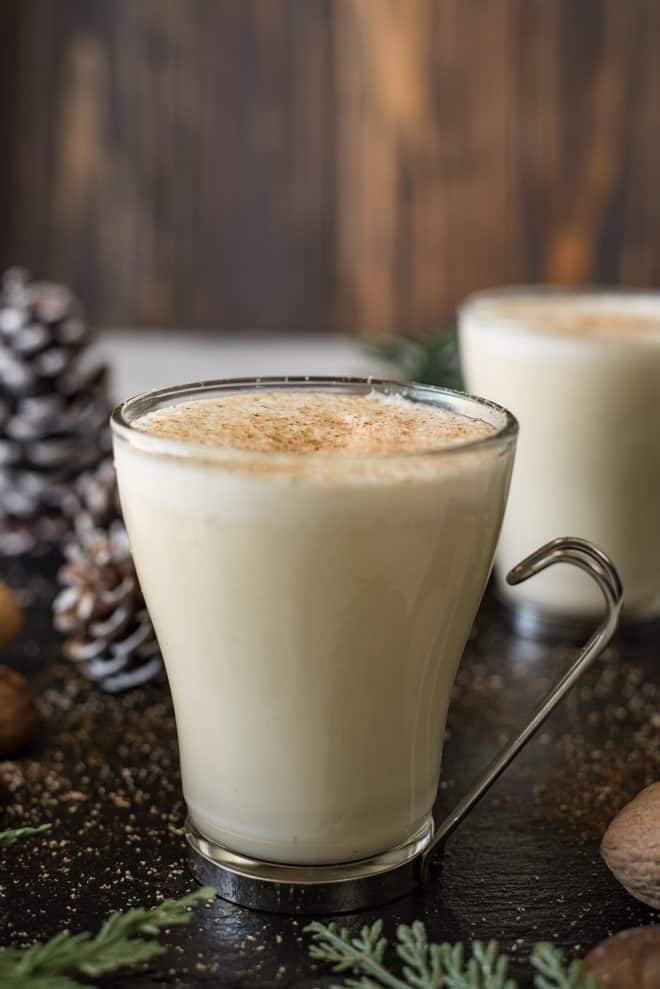
This Traditional Homemade Eggnog does not come really thick (it’s like hot chocolate) like some you buy in the stores, which I think are sometimes to thick. That’s because they contain cornstarch and guar gum. Does anyone even know what guar gum is? Apparently it’s a thickener that doesn’t sound very good for you.
What I love is that this eggnog recipe is all natural and you will know every ingredient. It is also thick enough to still make it creamy and luscious and linger on your tongue. What I also love is the addition of whipped egg whites.
The whites get folded in at the end and they thicken the eggnog so when you serve it, the egg whites float to the top and you have what looks like a foamy topping, like a latte.
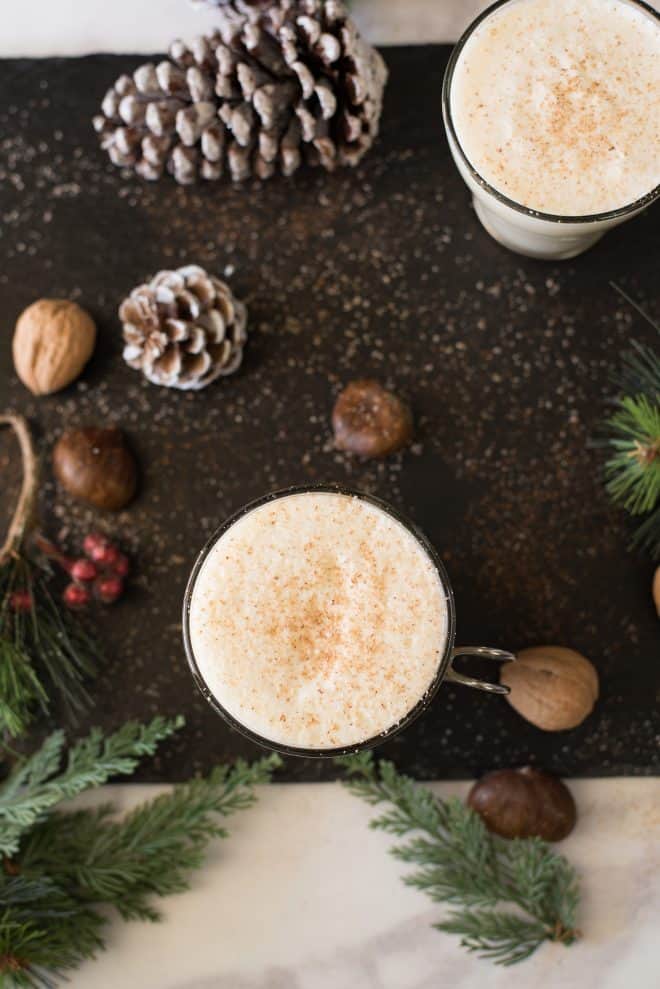
In this recipe yes, because the eggs are added to milk that is 160°F/72°C which is well above the temperature to kill any bacteria. There is also an option to pasteurize the eggs before using to make them safe.
We all love Traditional Homemade Eggnog as a festive drink, but turned it into a classic dessert. Check out this eggnog crème brûlée recipe. It’s really easy and has only 3 ingredients.
Because this is a traditional recipe, it is made with eggs. The egg yolks are cooked above the FDA recommended temperature of 145°F/63°C to kill any bacteria. The whites are not cooked and if you don’t feel comfortable adding them to eggnog, you can leave them out. The only difference is the texture will be different, it will be thinner and you wont get the foamy head on top. You can pasteurize the eggs before using. See below for instructions.
How to pasteurize eggs for eggnog
Start with room temperature eggs. Place them in a pan in a single layer and cover with cool water. Heat the water slowly over medium heat. Use a candy thermometer to check the temperature of the water. Until it reaches 138°F/60°C. If the temperature goes over by a few degrees, don’t worry, but you don’t want it to high or this could affect the texture of the egg. Maintain this temperature for 3 minutes. Remove the eggs and add to cold or ice water until the shell is cool to handle.
Rum, brandy or bourbon. This recipe has the option for spiked or not spiked.
I don’t like to add any alcohol to a whole batch because not everyone likes that way and you can’t feed it to the kids. I like to leave that up to whoever is drinking it. Spike this eggnog however you like, with rum or bourbon. I’m a bourbon spiker.
If you’ve tried this Traditional Eggnog Recipe or any other recipe on the blog then don’t forget to rate the recipe and let me know how you got on in the comments below. I love to hear from my readers!
Traditional Homemade Eggnog
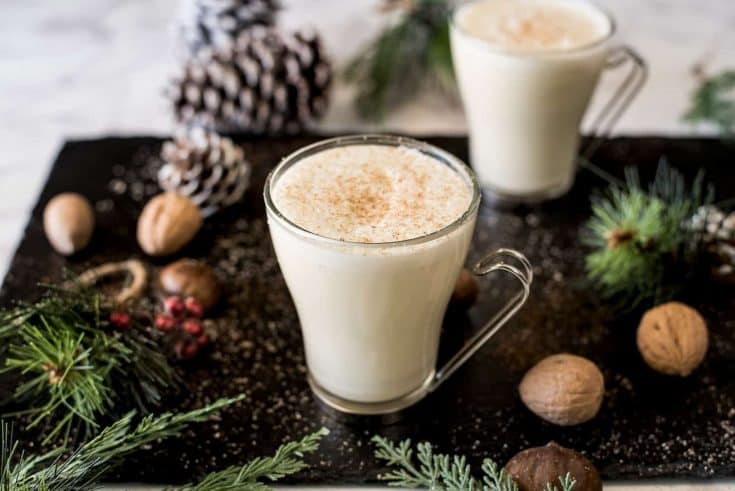
Traditional homemade eggnog is just how you want it, creamy and rich with all the holiday flavors of vanilla, nutmeg and cinnamon. Cozy up with mug of comfort for the whole family.
Ingredients
- 5 large eggs
- 3 cups (708 ml) whole milk
- 1 cup (236 ml) heavy cream
- 3 cinnamon sticks
- 2 teaspoons good vanilla extract
- ¼ teaspoon grated nutmeg, plus more for garnish
- ⅔ cup (85 grams) granulated sugar
- Bourbon to taste (optional)
Instructions
- To pasteurize the eggs before separating: Start with room temperature eggs. Place them in a pan in a single layer and cover with cool water. Heat the water slowly over medium heat. Use a candy thermometer to check the temperature of the water. Until it reaches 138°F/60°C. If the temperature goes over by a few degrees, don’t worry, but you don’t want it to high or this could affect the texture of the egg. Maintain this temperature for 3 minutes. Remove the eggs and add to cold or ice water until the shell is cool to handle.
- Separate the eggs and the yolks into separate bowls. Set aside.
- To a saucepan add the milk, cream, cinnamon sticks, vanilla and nutmeg, whisk to combine. Bring to a simmer until the temperature reaches 160°F/72°C using a candy thermometer.
- To a bowl add the egg yolks and sugar. Beat until smooth and ribbons form. Add the egg yolk mix to the pan and bring the temperature back up to 160°F/72°C. This is a safe temperature for the eggs to kill any bacteria.
- Remove the cinnamon sticks from the milk/cream mixture, stir in the bourbon if using. Refrigerate until cool.
- Beat the egg whites in a separate bowl until you get stiff peaks. Fold the egg whites into the cooled milk/cream. Serve topped with grated nutmeg and a splash of bourbon (optional).
Nutrition Information
Yield
6Serving Size
1Amount Per Serving Calories 172Total Fat 9gSaturated Fat 4gTrans Fat 0gUnsaturated Fat 4gCholesterol 201mgSodium 126mgCarbohydrates 8gFiber 0gSugar 1gProtein 10g
This nutrition calculation is provided by Nutronix that is only a guideline and not intended for any particular diet.

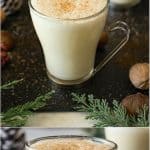

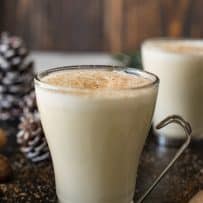


3 Comments on “Traditional Homemade Eggnog”
I make this recipe every year and everyone raves about it, kids and adults alike. I set a bottle of nice rum and a bottle of bourbon beside it with a shot glass, and both adults and kids can enjoy it. Thank you for the deliciousness!
I’m so happy you enjoy my eggnog recipe and thank you for sharing your feedback. Happy Holidays.
I loooove looking at all the yummy US goodies on all the blogs around Christmastime. We have delicious things too of course, but a bit different as you well know.
Love that you celebrate both US and UK food here!